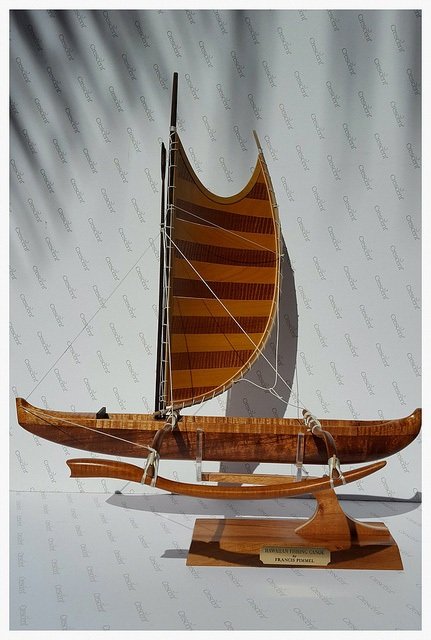


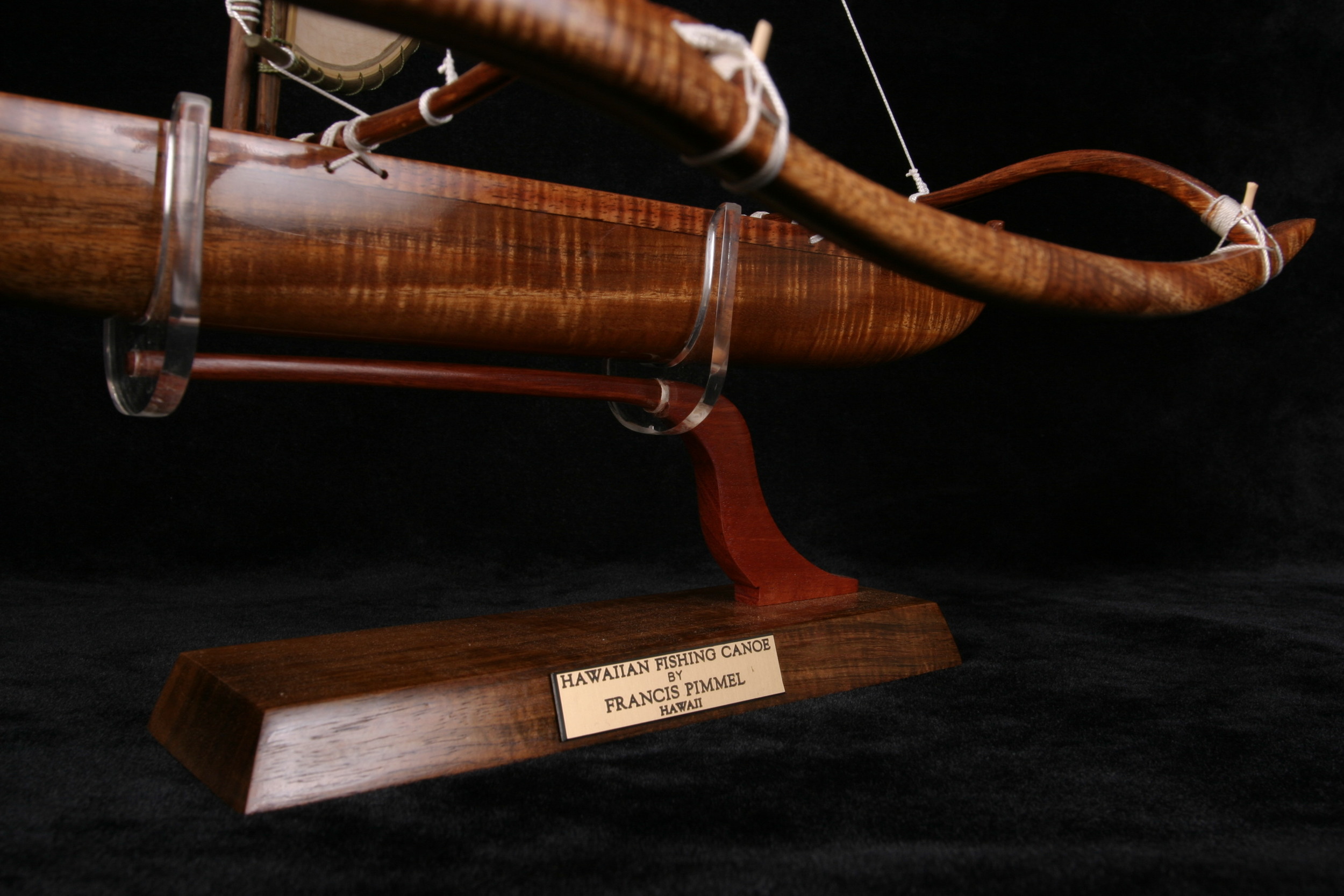


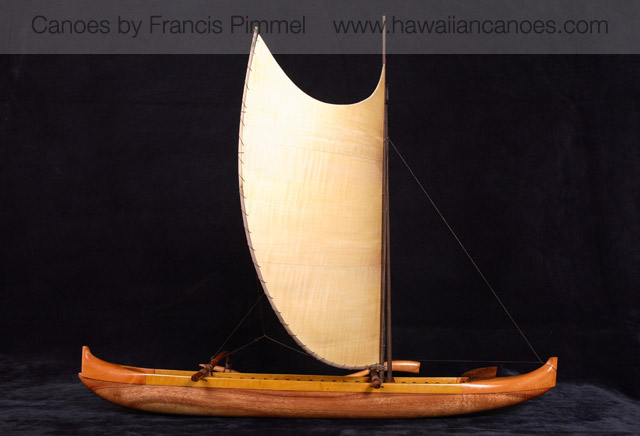

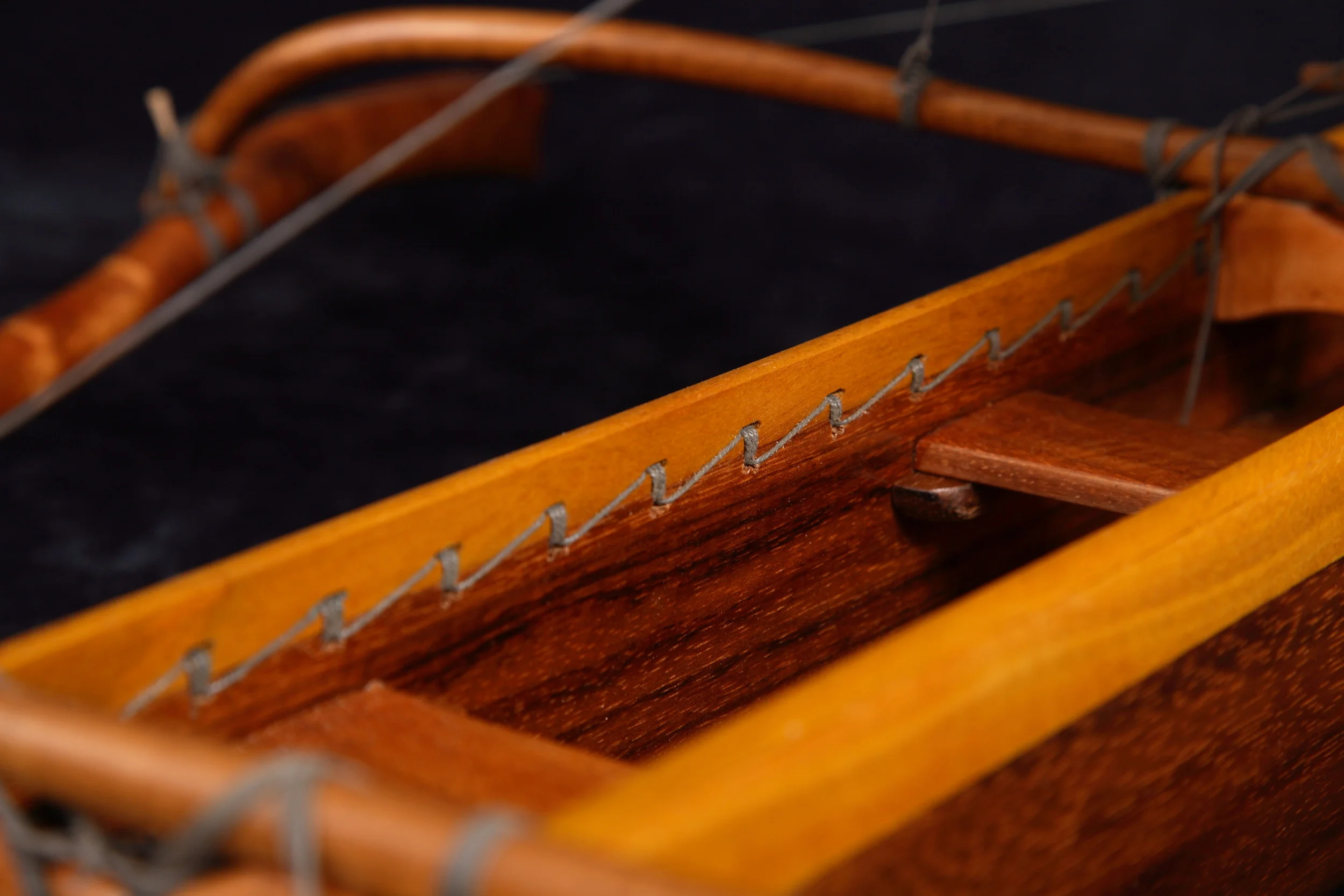
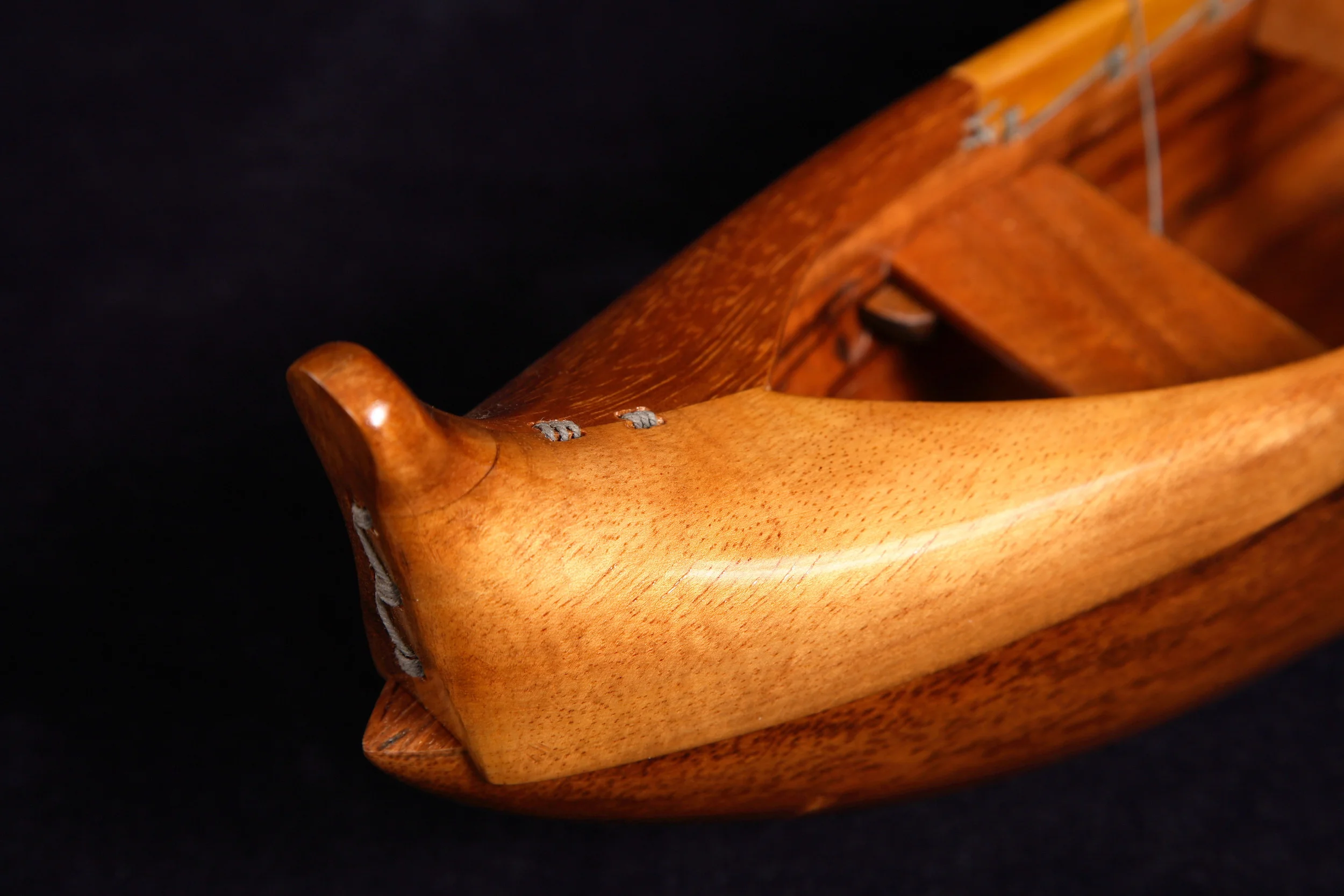
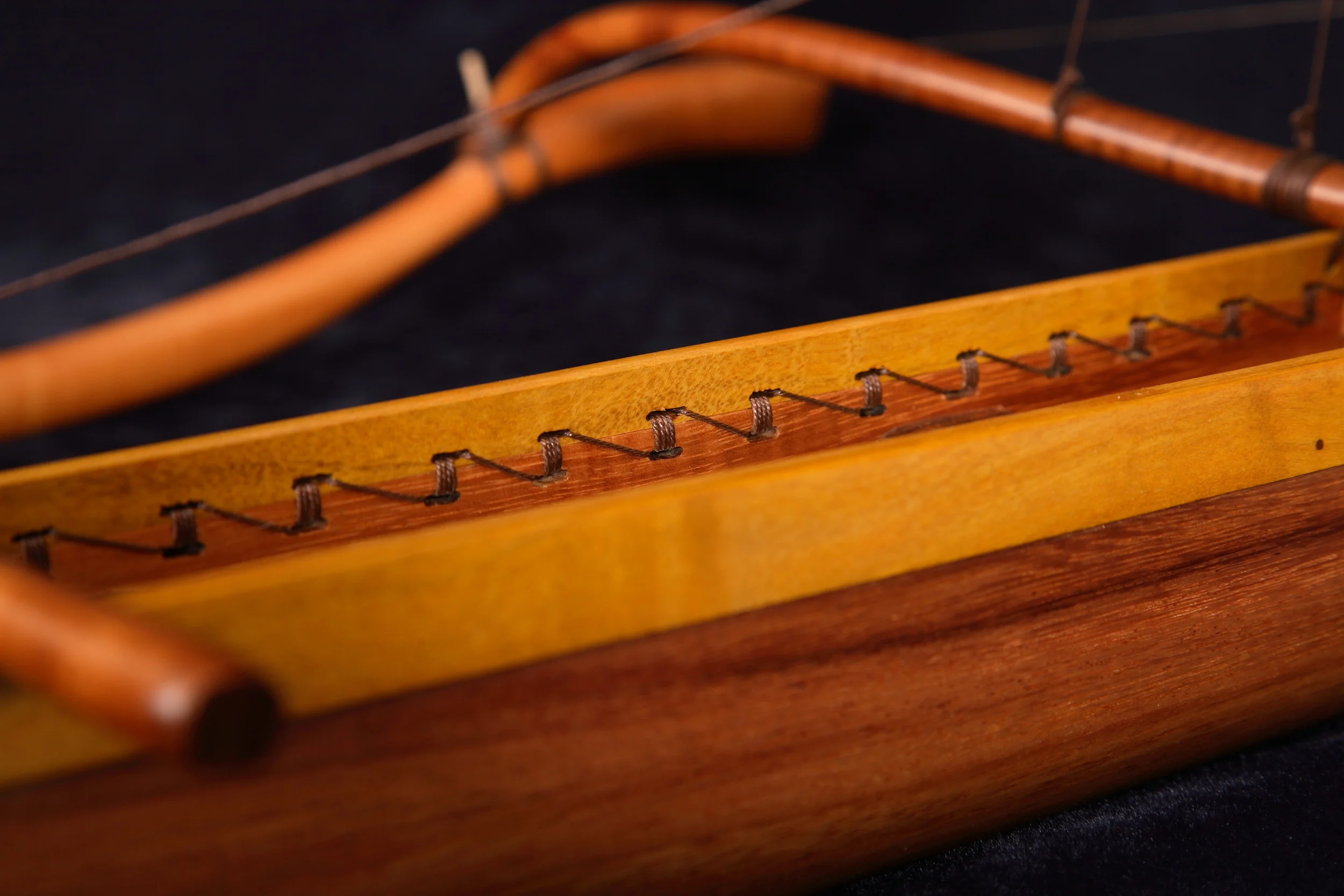

Let's explore the historical significance of these fishing canoe models from Hawaii. These models not only display the diverse shapes and sizes of canoes used in Hawaii until the early 20th century, but also provide insight into the construction techniques of that era.
One key feature that distinguishes Hawaiian canoes from those of other Polynesian islands is the use of Koa wood for canoe hulls. Koa Acacia is a type of wood native to the Hawaiian islands.
For the outriggers (known as iako in Hawaiian), Hau wood was used, wiliwili wood for the outrigger float, or Ama in Hawaiian. Additionally, the lashing of various parts on a Hawaiian single-hull or double-hulled canoe differs from the techniques used on other Polynesian islands such as Tahiti or Samoa.
Let's explore the historical significance of these fishing canoe models from Hawaii. These models not only display the diverse shapes and sizes of canoes used in Hawaii until the early 20th century, but also provide insight into the construction techniques of that era.
One key feature that distinguishes Hawaiian canoes from those of other Polynesian islands is the use of Koa wood for canoe hulls. Koa Acacia is a type of wood native to the Hawaiian islands.
For the outriggers (known as iako in Hawaiian), Hau wood was used, wiliwili wood for the outrigger float, or Ama in Hawaiian. Additionally, the lashing of various parts on a Hawaiian single-hull or double-hulled canoe differs from the techniques used on other Polynesian islands such as Tahiti or Samoa.
31305843173_6b975a4aa4_zflier.jpg